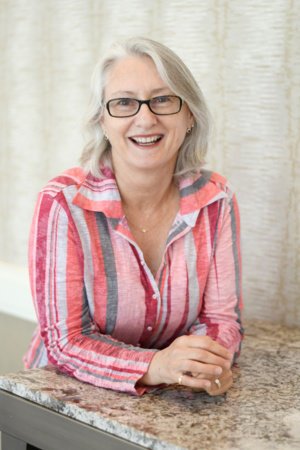Interview with Author Heather Gale & Illustrator Mika Song of “Ho’onani: Hula Warrior”
What inspired the telling (or re-telling) of Ho’onani: Hula Warrior?
HG: If you can believe it, Ho’onani inspired me to write her story! From the beginning of the documentary, A Place in the Middle, I noticed Ho’onani understood and felt her inner strength and the love and respect within her family felt true and honest. We get a clear sense that Ho’onani knows just who she is, and what she is capable of.
The very next day, I knew this story was extra special and that this had to also become a picture book. That’s when I reached out to the producers.
Here was me, an unknown in the industry, asking to write a picture book version of a documentary that was winning awards around the world! It was such a long shot of a chance that I may as well have signed up for a flight to space. When Dean and Joe replied asking to meet, you could’ve knocked me over with a feather.
What was the experience of working together to create Ho’onani: Hula Warrior like for both of you? How did you collaborate?
HG: This was such an exciting way to write a story! The biggest challenge was to condense a documentary down to a 32-page picture book – where do you begin, and where do you end a story that kids will love and understand? And of course, I had to include all those goose-bump, heart-stopping moments I’d felt. I watched and re-watched the film in a completely different way, taking notes and seeing what details I’d missed as the story began to take shape.
I enjoyed working with Mika, and if I were an illustrator, these pictures are just what I would have done too! We had some back and forth in each stage through the editor at Tundra Books, and I felt lucky to have a chance to ask questions along the way. That meant I also saw Mika’s rough sketches turn into water colours. Her choice of colors totally won me over.
MS: As the illustrator my job begins after the story is written. Once Heather finished writing the manuscript the editor sent it to me. I read the story and watched the documentary many times and then I began sketching the character of young Ho'onani. Then I emailed my drawings to the editor. The editor showed the drawings to Heather. The editor put together her notes and reactions along with Heather's and the rest of the team's (the art director or graphic designer and publicity or marketing person) in an email and sent them to me.
What is it that draws you specifically to writing nonfiction for children?
HG: I’m drawn to writing non-fiction for children as there is so much opportunity to add a little awe with words as well. Kids are so good at experiencing the simple joy of amazement with what they hear and see and that is refreshing.
What do you find most meaningful in creating the illustrations for children’s books - and particularly children’s books celebrating people or characters from marginalized or minority communities?
MS: Growing up I had a wealth of books and I loved to read and look at them all day. But as an Asian kid I did not see characters that looked like me in any of my books. Later when I finally did see myself represented in a book I was startled and then suddenly very invested in the world. Now that I am working on picture books I base my characters on my family and the people around me. Watching young readers see a main character that they can identify with in a picture book I can see that it still has a powerful effect. It can make them feel confident to be themselves and unlimited in their potential.
What do you enjoy most about presenting to and working with young students?
HG: When I’m presenting to a class, kids love knowing this story is about a real person and then, the simple message that you can be yourself and that gender doesn’t define barriers, resonates with each one of them.
MS: Interacting with young students is one of my favorite parts of working on picture books. I want my work to be relevant to readers and classroom visits are great opportunities to test your work in the real world. Young students are usually very generous and honest with their response. I always have a bunch of notes to think about after a visit. I am proud to finally be working in my dream job and I love sharing that possibility with young people.


